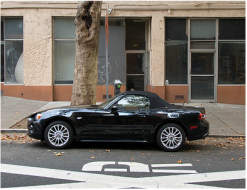
Poor transitions in writing causes the material to be confusing. In school and job promotions they hinder success. They leave a trail of clutter in a move and result in a dieter maintaining lingering pounds. Failure to transition well from work to home could result in an accident, road rage, or a non-required detour. Point A and Point E or F or Z have little significance in light of all the points that lie between them. Since transitional moments are the weight of success, it’s important to handle transitions well.
First, reassess what was in light of what will be. What part of the past is crucial to the future? In writing, a short reference to a previous thought may be all that’s required to keep a topic flowing fluidly from paragraph to paragraph. Changing schools might be easier in the company of old friends, while a new house might feel like home with a few nostalgic mementos in the décor. Information gleaned from one position can prove quite valuable on the upward corporate climb, and protein-rich nut butters can be very filling to a starving dieter.
However, just because some things make the cut, not all of the past needs to be a part of the transition. While some people may be an asset to forward motion, others can be a hindrance. Special treasures amid new furnishings might by comforting, but moving everything to a new home creates clutter. Filling the car with file cabinets from the office halts the ability to go home and relax. Transitions, therefore, require a reassessment of what is essential and valuable in order to discard that which will hinder either the actual transition or the goal for the future.
This vision of what will be is crucial to a successful transition. Just as entering a new job or a new school or a new city doesn’t come with complete instructions concerning everything that change will entail, there is a sense of purpose and direction. A student anticipates a particular class or teacher, an employ looks forward to the pay raise or the benefits of time off and health care. The writer envisions the idea for the next paragraph or imagines a scene for a new book chapter. The dieter hangs a picture of her thinner, healthier self on the fridge. The vision is what motivates momentum through the transition. It says, “Pay attention to your driving so you can arrive safely home,” though it may not clarify what sights or sounds or smells will be revealed as the house door opens upon the family within.
If physical occurrences require reassessment and vision to transition successfully, so do the less tangible areas of our lives. Personal growth and spiritual development demand we pause, reevaluate the journey, clear out the clutter, and press toward the goal. Whether the transition is one that is self-imposed or pressed upon us by circumstances not of our choosing, the process is much the same.
Keep the valuable—people, wisdom, things…
Eliminate the non-essential—tasks, time-wasters, clutter, mindsets, nay-sayers…
Stay aware of possible setbacks, distractions, and hindrances—sins, busyness, pettiness, offenses…
Keep the faith for what lies ahead—who you can become, talents to unfold, victories to accomplish, God-relationship yet unexplored, eternal reward…
Persevere. Shift the gears—Because embracing the troublesome transitions means we are going somewhere!
Tip/Tidbit: What change are you presently experiencing. Plan for your future success, and stay hopeful in the process.























 RSS Feed
RSS Feed
